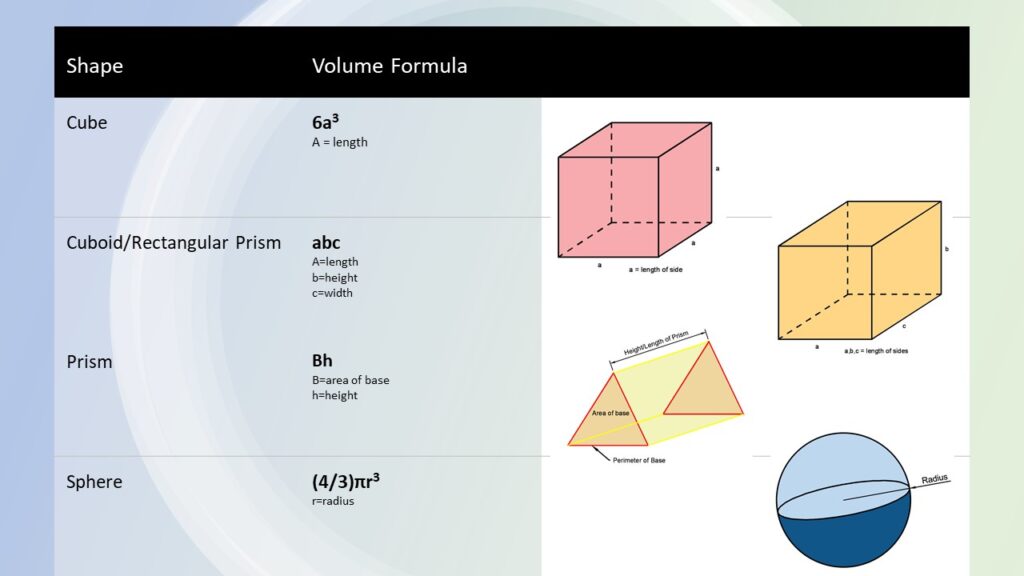Calculation of Volume for common shapes
Table of Contents
Formula for Volume of shapes
The formula for volume of a shape, solid or 3D object is how much space it can occupy, which is represented numerically. Volume of shapes is usually represented in units such as mm3 and m3.
The common arithmetic formula for calculate the volume of a shape is length x width x height. This is commonly used when calculating the volume of a cube or prism. However, there are more complex shapes that require integral calculus to determine the volume/ maximum space that a shape can occupy.
This page goes over the volume formulas of the following shapes:
- Cuboid
- Rectangular Prism
- All Prisms
- Sphere
- Cylinder
- Pyramid
- Cone
In the formulas below, the notations “a“, “b” and “c” all refer to lengths. “a” is a different length to “b“, which is also different to “c“. We are using these notations instead of actual numbers, so we can create a formula and input the values into the specific formula of volume of a shape.
The term “ab” means “a” multiplied by “b“. “a2” means “a squared” or ” a multiplied by a“.
Important note – make sure the units of the sides are all the same when carrying out calculations.
Volume of a cube
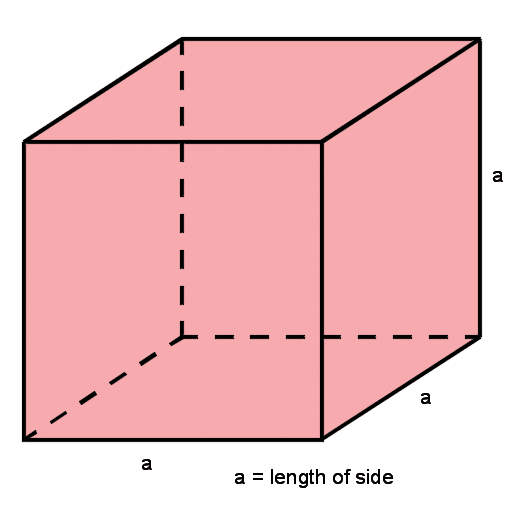
The volume of a cube is a3. The length of each side is a.
The length = a
The width = a
The height = a
Volume = Length x Breadth x Height (which is a3).
Formula for Volume of a cube = a3
Volume of a Rectangular Prism or Cuboid

The volume of a prism/cuboid is the length*width*height.
This is different from a cube where each length is not the same (all sides are equal in a cube).
a = length, b = height, c = width
Volume of a prism = abc
Volume of a Cuboid = a*b*c
Volume of a Prism
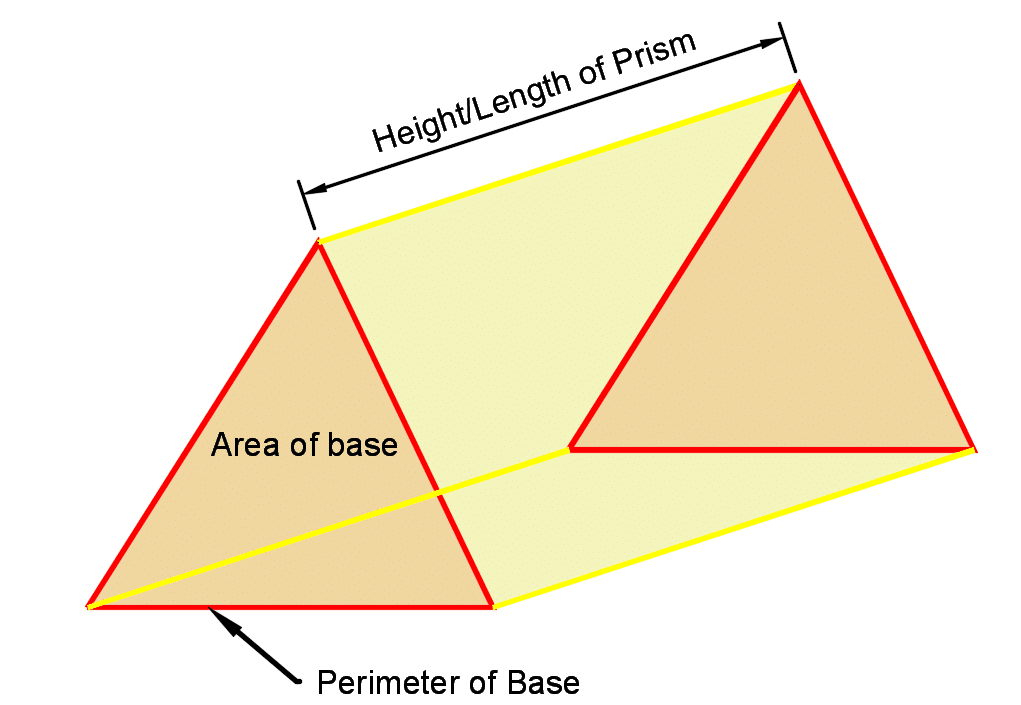
A prism is a solid object with identical ends, flat faces and has the same cross-section along its length. (cylinders are not prisms)
In this shape, the area of the base at both ends are identical, giving 2B (B is base area)
B = area of base, , h = height
The volume of a prism is the area of base (B) multiplied by the length (h).
Volume = B*h
Formula for Volume of a Prism = B*h
Volume of a Sphere

A sphere is an object that is the surface of a ball.
The volume is calculated using the radius of the circle.
Formula for Volume of a Sphere = \(\frac{4}{3} \pi r^3\)
Volume of a Cylinder
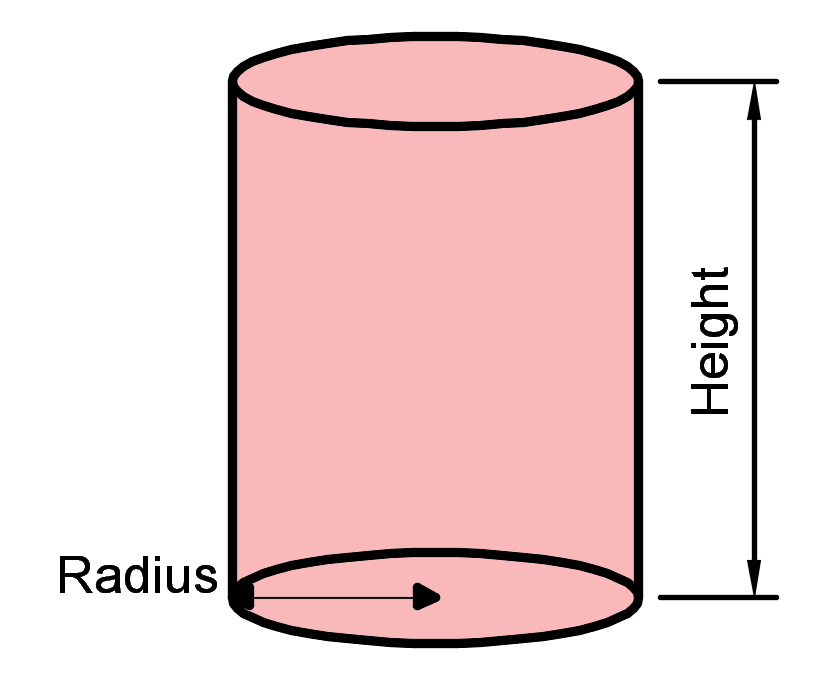
A cylinder is a cylindrical object with two circular flat ends and one curved side. It has the same cross-sectional area along the length of the shape.
The volume is the surface area of one end multiplied by height.
Surface area of ends = πr2
Height = h
Total volume = πr2 x h
Formula for Volume of a cylinder = πr2 x h
Volume of a Pyramid

A square shaped pyramid has a square base and triangular faces on each side.
The area of the base will be a x a = a2 (area of square)
a = the length of the base on each side
h = the height of the pyramid from the center point of the base to the tip.
Total volume = \(\frac{1}{3} a^2 h\)
Volume of a Pyramid = \(\frac{1}{3} a^2 h\)
Volume of a Cone
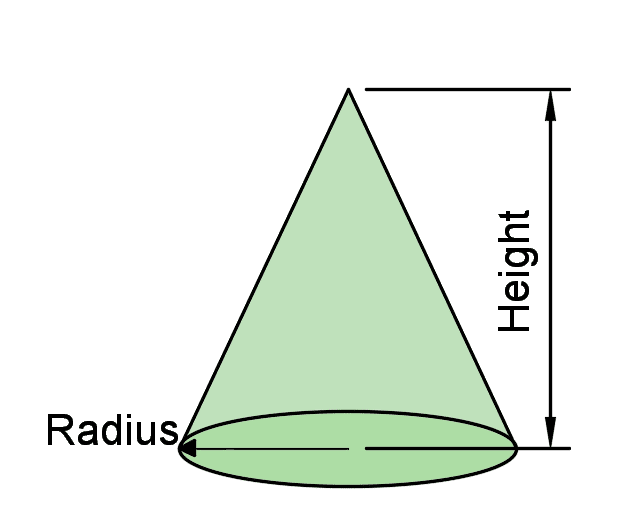
A cone is made up of one curved side and base (circular base). A classic example is an ice cream cone.
The area of the base will be πr2 (area of circle).
h = vertical height
The total volume of the cone will be \(\frac{\pi}{3} r^2 h\)
Formula for volume of a Cone = \(\frac{\pi}{3} r^2 h\)
